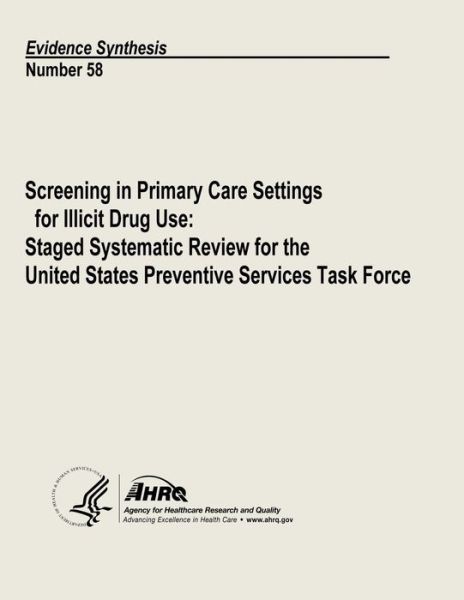
Tell your friends about this item:
Primary Care Relevant Interventions for Tobacco Use Prevention and Cessation in Children and Adolescents: a Systematic Evidence Review for the U.s. Pr
U S Department of Heal Human Services
Primary Care Relevant Interventions for Tobacco Use Prevention and Cessation in Children and Adolescents: a Systematic Evidence Review for the U.s. Pr
U S Department of Heal Human Services
Publisher Marketing: In 2003, the U. S. Preventive Services Task Force (USPSTF) issued a recommendation on screening and counseling to prevent initiation and promote cessation of tobacco use in children and adolescents. This recommendation was based on evidence synthesized for the 2000 Public Health Service (PHS) "Clinical Practice Guideline on Treating Tobacco Use and Dependence." The PHS report focused specifically on tobacco-use treatment, including a review of the effectiveness of tobacco-use interventions for adolescent smokers. In contrast, the current systematic review examines the benefits and harms of strategies designed to reduce the prevalence of tobacco use through primary care relevant prevention and cessation interventions in children and adolescents. The USPSTF will use this review to update its 2003 recommendation. Most tobacco users in the United States are cigarette smokers. As a result, the majority of research in this field has focused on the assessment, prevention, and treatment of cigarette smoking. In this report, every effort has been made to describe the research according to the specific form of tobacco (e.g., cigarette smoking or all tobacco use) that was examined. In particular, the term "smoker" is used instead of "tobacco user" to indicate if the evidence comes from studies of cigarette smokers. We included trials conducted in, referred from, or potentially feasible for (or referable from) health care settings. We describe these collectively as "primary care relevant." In addition, in this report, "prevention" refers to preventing the initiation of tobacco use or maintaining abstinence among nonusers, whereas "cessation" refers to supporting a smoker or tobacco user in stopping use/quitting. Tobacco use is the leading cause of preventable death in the United States. An estimated 443,000 deaths occur annually that are attributable to smoking, including nearly 161,000 deaths from cancer, 128,000 by cardiovascular diseases, and 103,000 by respiratory diseases (excluding deaths from secondhand smoking and residential fires). Tobacco use leads to more deaths than HIV, illegal drug use, alcohol use, motor vehicle injuries, suicides, and murders combined. Tobacco's toll is not only physical, but also economic, as smoking costs the United States approximately $96 billion each year in direct medical costs and $97 billion from productivity losses due to premature death. While cigarette smoking is the predominant form of tobacco use in the United States, other tobacco products include cigars, pipes, and smokeless tobacco products (e.g., chewing tobacco, dipping tobacco, and snuff). Newer tobacco products include bidis, kreteks, smoking tobacco through the use of a hookah (i.e., waterpipe), snus, dissolvables, electronic nicotine delivery systems, and little cigars/cigarillos. This review examined the benefits and harms of primary care relevant interventions designed to both prevent tobacco use in children and adolescents and help child and adolescent tobacco users stop using tobacco. The KQs we examined were: KQ 1. Do interventions in primary care designed to prevent tobacco use or improve tobacco cessation rates in children and adolescents improve health outcomes in children and adolescents (i.e., respiratory health, dental/oral health) and reduce the likelihood of adult smoking? KQ 2. Do interventions in primary care prevent tobacco use in children and adolescents or improve tobacco cessation rates in children and adolescents who use tobacco? What are elements of efficacious interventions? Are there differences in outcomes in different subgroups, as defined by age, sex, race, socioeconomic status, type or pattern of tobacco use, urban versus rural, depressed versus nondepressed? KQ 3. What adverse effects are associated with interventions to improve tobacco cessation rates or prevent tobacco use in children and adolescents?
| Media | Books Paperback Book (Book with soft cover and glued back) |
| Released | April 17, 2013 |
| ISBN13 | 9781484142349 |
| Publishers | Createspace |
| Pages | 108 |
| Dimensions | 216 × 280 × 6 mm · 267 g |

































